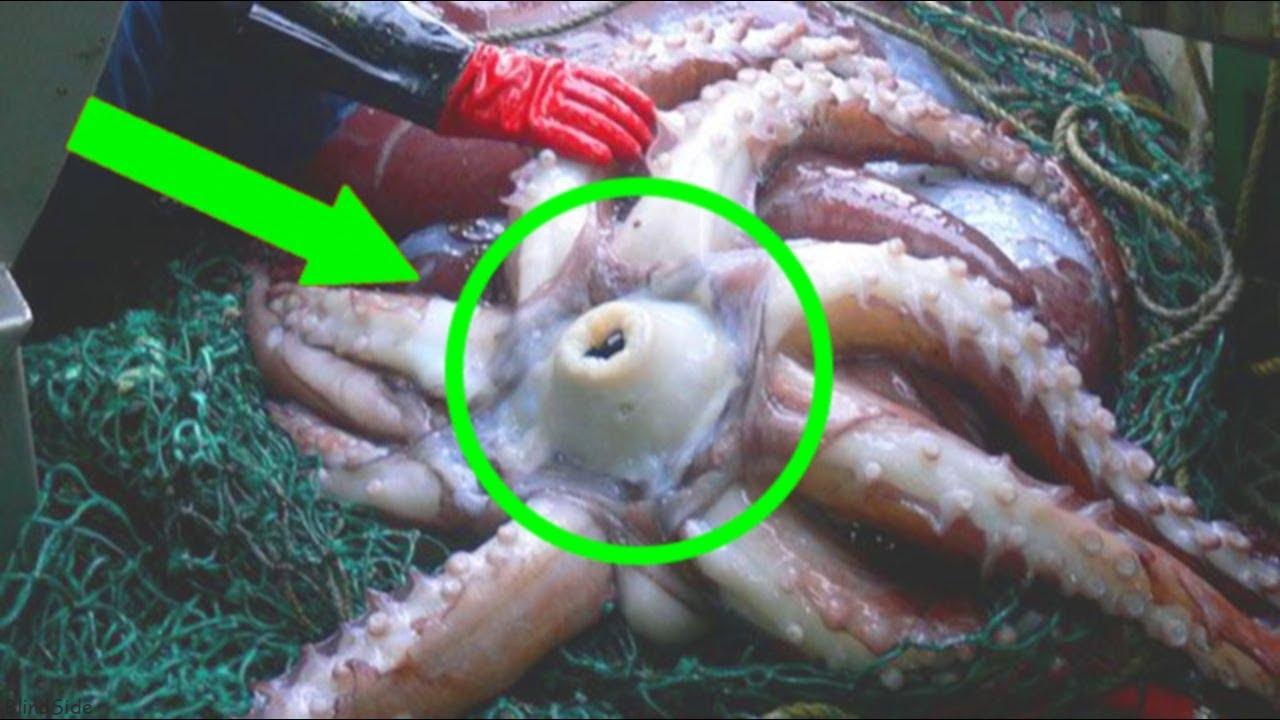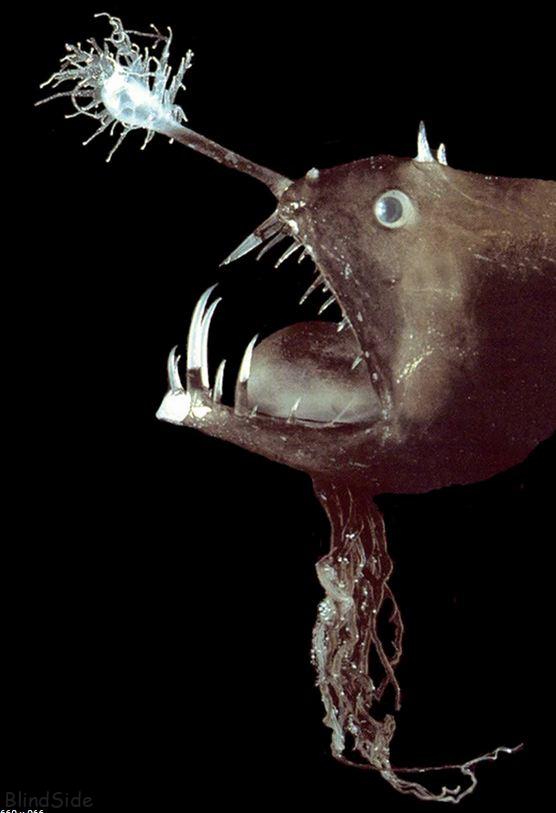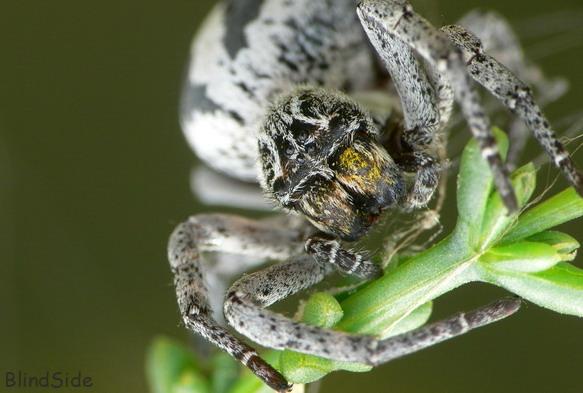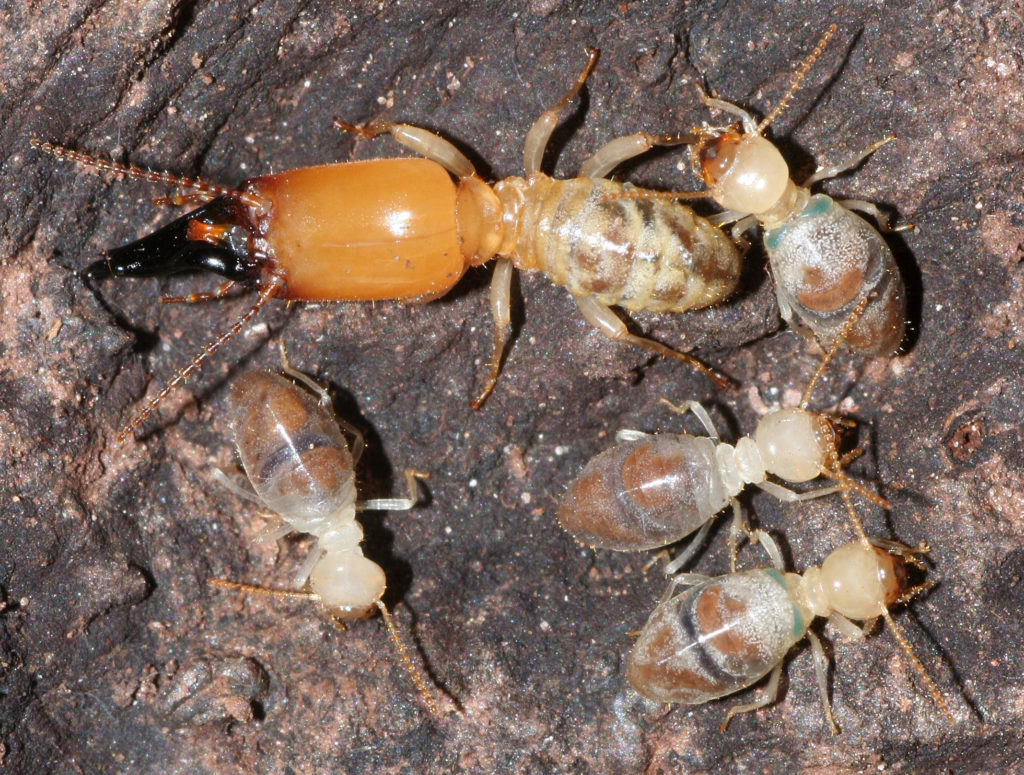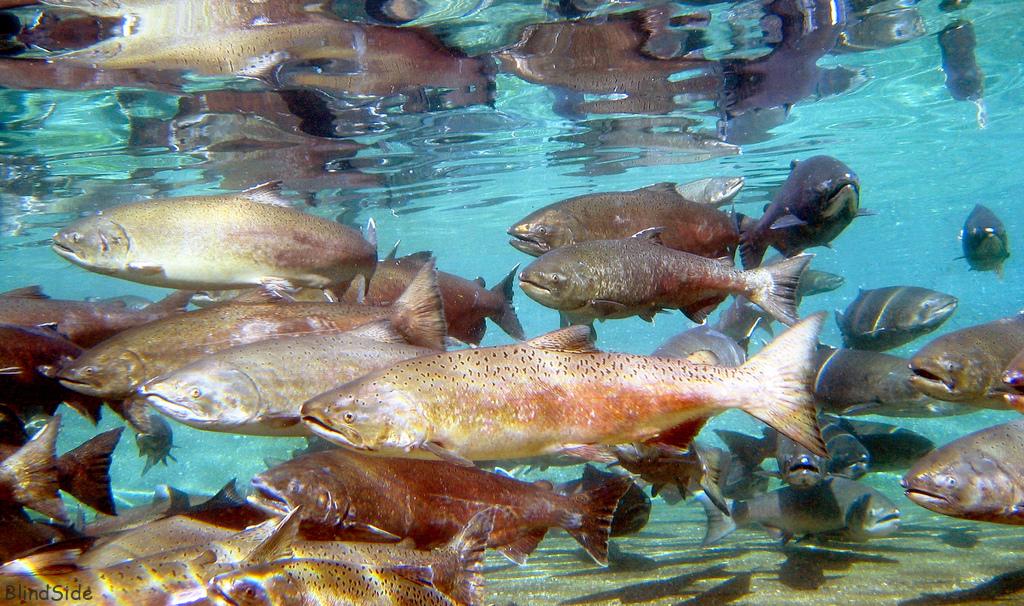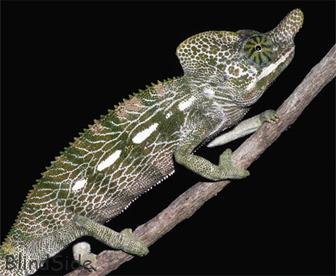Intro
We are here on the Blind Side, the animal kingdom is full of creatures that have some strange quirks. The human race is not exempt from a few as well. But are there really animals that purposely self-destruct? It seems so. From a lazy male that makes the female do everything, to a mother that will let her babies devour her organs, here are 15 creatures that can actually self-destruct.
15. Female Octopus
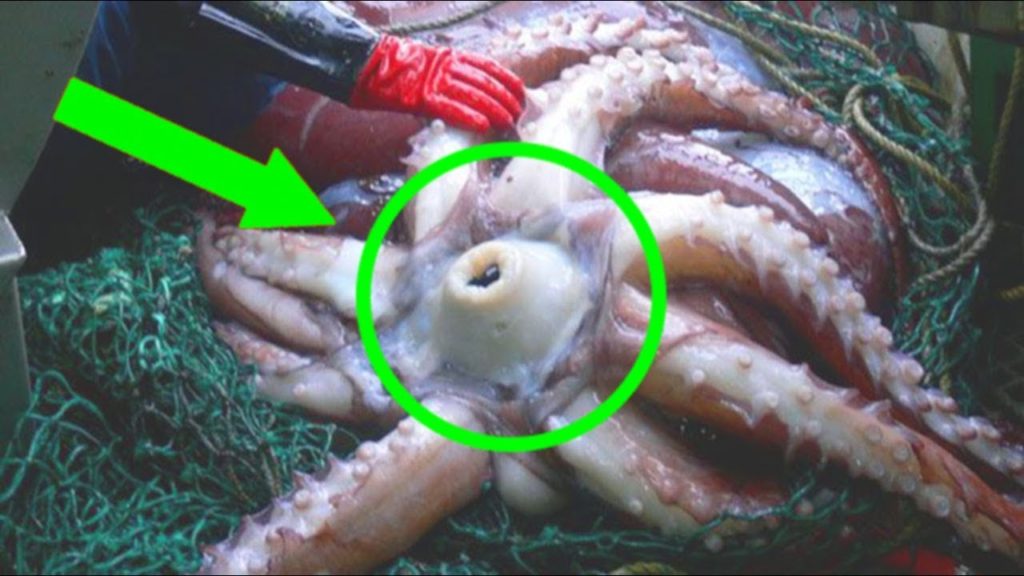
As soon as a female octopus gets pregnant, her days are numbered. So, if you ever see the lump of a female octopus as thick as this, then you better run fast because it might just auto-explode right in front of you!
Female octopus (octopi?) begin to self-destruct as soon as they lay their eggs. There is no denying they are dedicated mothers but to their detriment. They guard the eggs, blow water on them, stroke them, and protect them 24/7.
While she won’t leave the eggs for food, she will take advantage of any food that comes within a short distance of them. However, within a week of an octopus hatching eggs, the erratic and self-destructive behavior begins.
The octopus will stop eating and foraging, and she will start focusing on self-harm. Some will groom themselves to the point of severe skin damage, while those in captivity can slam themselves against their tanks. It’s also not uncommon for them to bite their own tentacles off. Imagine being a new mother and deciding to eat your hands off?
When the babies start to hatch, she dies and they grow up without a mother. The babies must learn how to adapt and survive on their own from day one.
Scientists have been intrigued for years over how a seemingly healthy and sane octopus can all of a sudden become erratic and self-destructive at the impending arrival of their children. Scientists have labeled octopus as semelparous, which means they give birth and die. However, there are no robust theories as to why this happens.
Some believe it’s nature’s way of ensuring she doesn’t eat her babies, but we may never know for sure why the octopus breeds once, then dies.
14. Gray Slender Mouse Opossum
If you search for long enough in Brazil’s lower coastal region, you will likely come across a slender gray opossum. But don’t wait too long, for it won’t be long until the ones you spot are ready to pass on.
This little mammal has an exceptionally short lifespan, and no one is all that sure why. Females will live around 18 months with one reproductive cycle, and males will live for about a year. They will mate then pass on not long later.
The gray slender mouse opossum lives in scrub forests, rainforests, and deciduous forests. They prefer the humid coastal conditions of Brazil. However, it’s not uncommon to find them in inland plateaus and eastern mountain forests too. The only difference between these opossums is that coastal opossums tend to be darker.
After the mating season, the baby opossum is born without a dad. A few months later, the mother opossum passes on too. The strange thing is, baby opossums are not well-equipped to live on their own from a young age. They are vulnerable and frail, and both conditions and predators can put them at high risk. With such a short lifespan, the opossum must grow up fast, begin a new reproduction cycle, then repeat the process again.
13. Yellow-Footed Antechinus
The family dynamic of the yellow-footed antechinus is a little odd, and you may be surprised at what leads the males to self-destruct, and how the females act so callously.
This little marsupial, which also goes by the name of Mardo and looks like a mouse, is found in northeast Queensland of Australia, all the way to southwest Western Australia. It’s up to six inches long, around 2.75 ounces in weight, and adapts to most environments. It has no fear of humans, so it has no problem building a nest in your home. Oh, joy.
Mating season is something that can happen at random throughout the year and lasts around two weeks. Males will fight, overexert themselves, and visit different nests to find the woman of their dreams. Once they do the deed, which lasts around 12 hours, they usually die. Starvation, nutrient loss, weight loss, and overexertion see their early demise – all in the name of fatherhood.
Within a month, up to ten little babies are born, and the mother yellow-footed antechinus does her duty to care for them. They live in her outside pouch and cling to her for around five weeks. When they are too heavy, she builds them a nest and weans them off of her at approximately 12 weeks old.
The babies follow the mother everywhere she goes, but she’s a discriminatory critter. She will kill her babies at random, and females are usually the first to fall victim to her viciousness. If she produces another litter before the year is out, she’ll get rid of all the males as well, to make way for her new family.
Any remaining yellow-footed antechinus will reach maturity at around 11 months old and will take off to start this whole strange process again.
12. Male Anglerfish
The male anglerfish takes the term freeloader to an entirely new level. No, he doesn’t park up on his mom’s couch and empty her cupboards of snacks. Instead, he latches onto his new wife and makes her do all the work – eating, moving, breathing, and seeing included.
When the male anglerfish is born, it follows the scent of female pheromones to find a suitable mate. The female anglerfish aids this process by shining the way with her bioluminescent lure. He will bite onto her stomach and hang on tight until her skin – and his – fuse into one. Over time, their blood vessels join, and he is able to access all her nutrients. He no longer has to do any of the work. He’s not entirely useless, though, for he gives the female anglerfish sperm whenever she wants it.
Over time, the male doesn’t need any of his body parts. He does away with his eyes, fins, and some organs until he’s nothing more than a tumor-like chunk of flesh hanging onto the side of a fish. Whenever she’s ready to spawn, he’s literally by her side to provide the goods.
11. Stegodyphus Lineatus Spiders
The Stegodyphus Lineatus spider is proof of a mother’s love – and also of how far she will go to ensure her offspring are provided for. We’re not sure we’d go this far, but we applaud her efforts. The Stegodyphus Lineatus spider builds a silk sac and fills it with around 80 eggs in a little spider-like cave for protection.
When they hatch, she pierces a hole in the protective webby material and sets them free. She then devotes her life (literally) to make sure they don’t go hungry. She will stop eating and then regurgitate whatever is left in her stomach for her babies to eat. In this vomit is also a bit of her own stomach.
Weirdly enough, she will vomit on her own face for her babies to enjoy, and they all crowd around her like she’s the buffet table. Over time, she will bring up over 40 percent of her own body mass. But for growing spiderlings, that’s not enough. They see their mother as dinner and pierce a hole in her abdomen to drain the rest of her innards.
Research into this process shows that even while her babies are literally eating her from the inside out, she is still alive. If they touch a leg, she pulls it back. Once the babies have finished dinner, there is around five percent of the mother’s mass left. The good news is, the babies aren’t hungry anymore.
10. Wambengers
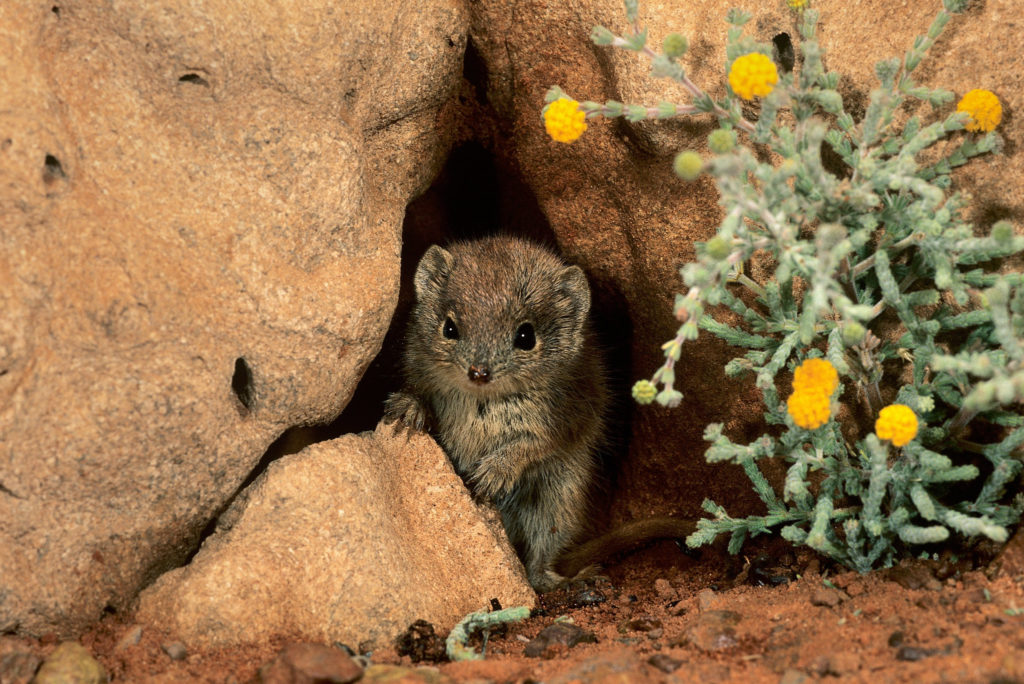
The red-tailed Wambenger, also known as the red-tailed phascogale, is a meat-eating marsupial. In many ways, it’s similar to a kangaroo, but it’s also quite different in others. Just like the ‘roo, a wambenger will carry its babies, known as joeys, in its pouch. It will also become mature at around one-year-old and lives in low-density areas around Western Australia.
When you see a wambenger, you might think it lives a similar life to a kangaroo, but it doesn’t. This self-destructive creature has an entirely different way of life. Male wambengers will pass away from stress after mating, and rarely survive their second year of life.
The male can work themselves up that much during the breeding season, covering around 50 hectares, that their little bodies can’t take it anymore. They go into self-destruct mode and pass on once they’ve done the deed.
Females will live until they are around three years old, and can have about 15 babies in that time.
Because of their short life span naturally and from cat, fox, owl, and goanna attacks, wambengers are quite rare.
9. Male Australian Redback Spider
Most people immediately know how to identify an Australian redback spider. The clue is in the name! The female is black and has a long red stripe on her back. The male and juveniles are brown with a white stripe.
If you can’t identify them by their colors, then you surely will be able to if you see them mate. It’s insane. Once the male finds a female he likes or vice versa, he will prepare himself to be eaten – oh, and to make his newfound love a mother.
He lies on his back close to her mouth to ensure he’s in the best position for her to eat him. He will then fertilize her eggs while she slowly devours him – bit by bit.
The reason for this process is that the male can only mate once, and the female is likely to reject male attention after she claps eyes on “the one.” The male will do anything to create his prodigy.
But interestingly enough, males are taking a stand. They don’t want to be eaten anymore. Many male redback spiders are now choosing to mate with females who are too young to eat them. They achieve their goal of fatherhood, but they get to leave with their life. This adaptive behavior is remarkable in the spider world and could spell the eventual end of self-destructive attitudes, at least in this species.
8. Termites
Whenever people sacrifice themselves for their loved ones, they get a news article written about them. But who’s writing a news article for termites who commit selfless acts every day? We’ll do our part.
A particular species of termites in French Guiana rainforests should get a pat on the back for its brave efforts. Throughout the lifetime of a worker termite, it will grow blue crystals within a pair of glands on its back. The older it gets, the more toxic and larger that backpack gets.
When the oldest termites of the group discover enemies getting too close to the worker termites, it will blow up that backpack of blue crystals directly into the enemies to protect the rest. This ultimate act of self-sacrifice is an amazing discovery.
But it also makes sense. As termites age, they are less useful as workers. Their mandibles are worn down, and molting doesn’t sharpen them. As a result, they can’t work at the same speeds as the younger members of the colony.
While not entirely useless to the colony, they feel less useful. They move their job toward protection, and exploding themselves to take down their enemies shows how dedicated they are to their role in the colony until the very end.
7. Parasite that Causes Mice to Lose Fear

It’s a dangerous and crazy world we live in when there is a parasite that can alter your fear senses. That’s the current reality with toxoplasma and rodents. Around a third of people globally have had this parasite at one time or another, which makes the findings even spookier.
The microbe causes a disease known as toxoplasmosis, and it’s common in a range of different animals. But how it affects mice is altogether unique. Mice without the parasite smell a cat and flee. One that has been affected – even if it no longer shows signs of having the disease – will almost be attracted to the cat.
Even a slight brush with the disease can have permanent effects. Once the parasite enters their system, they will no longer be scared of cats. Some scientists believe the reasoning behind it is almost evolutionary. The parasite has to complete its life cycle, so it wants to get back into the stomach of the cat to reproduce. To do so, the mouse must be eaten.
Whatever the reason, this new research could have significant implications in infectious disease medicine in the future.
6. Pacific Salmon
Parents make sacrifices every day for their kids, but in the pacific salmon world, they sacrifice themselves to become parents.
Upon reaching maturity, Pacific salmon will return to the location in which they were spawned to reproduce. This journey is an upriver one and involves migration over hundreds of miles. Five species are part of this upstream run, including the sockeye, pink, chum, coho, and chinook salmon.
The race against the clock sees them back to their roots to perform one first and last mating ritual. It seals their fate, and they ultimately die within moments of doing the deed.
Pacific salmon, like many insects, haven’t yet worked out their energy balance. They don’t know how much energy to give to this one task, and how much to save for future jobs – such as reproduction and general survival.
After an arduous mile with rocky, uphill rivers, they have hardly any energy left in the tank. They will use the little they do have to carry on their line. But after their passing, they continue to benefit the fish population. The bodies, as they rot, fertilize the stream in which their young are forming. This brings more insects, AKA fish food, and provides a far more diverse environment for future salmon populations to survive. Therefore, their death was certainly not in vain.
5. Praying Mantis
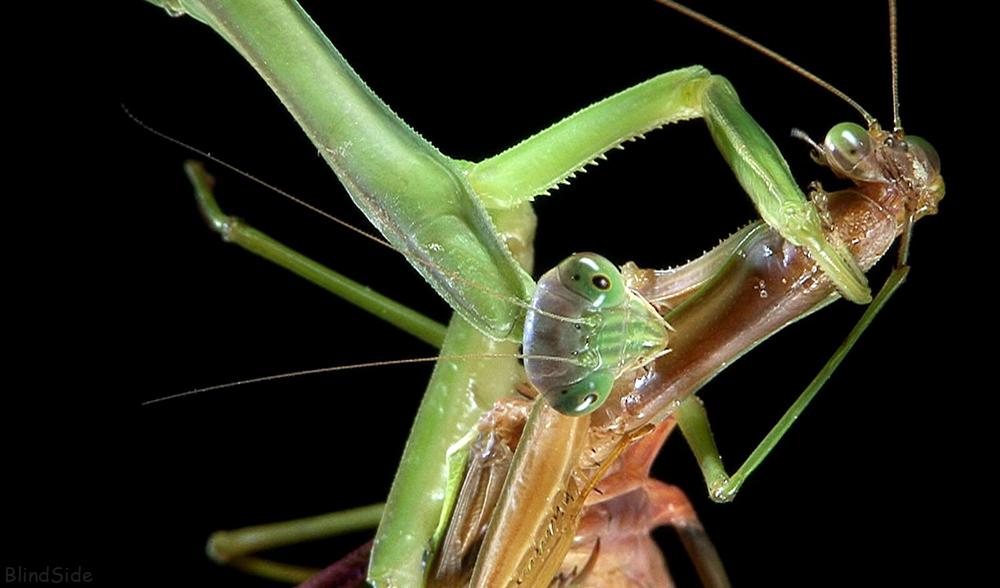
We’re going to come right out and say it. Female praying mantis bite the heads off of their male lovers when they reproduce. For a long time, we were not okay with this. How unfair is that? But believe it or not, this self-destruction in the name of reproduction is actually a good thing, or so recent research says.
For many years, scientists had no idea why around 25 percent of female praying mantis would eat their male friends. It seemed uncalled for, but there might be a reason for it.
After much research, they found that females who did engage in this horrible process would produce around 25 percent more eggs in her clutch than those who decided against it. What’s more, the eggs of the female who did eat the males contained more of the male’s DNA, biological material, and male-derived amino acids. So, after all that, there was a method to her madness.
4. Male Dark Fishing Spiders
In the spider world, it’s pretty standard for the male, who usually is smaller than the female, to die after mating. Often, the female makes sure he doesn’t get out alive anyway.
But in the case of the dark fishing spider, the male dies all on his own without any help from the female. University of Nebraska behavioral biologists found that once he does what he has to do, he curls his legs up in a ball and becomes immobile. He will die within a couple of hours of doing so unless the female decides to eat him beforehand.
Scientists believe it’s a form of genital mutilation that could be to blame. The male will choose a virgin spider and mount her. He ejaculates his sperm into a web, which he pulls up into his front-end appendages. These inflate, and he uses them to deposit the goods into the female. It’s during this stage that something happens to make scientists believe it’s game over. As a result, the male dark fishing spider falls into the monogyny category, which means it can only mate once.
3. Honeybee
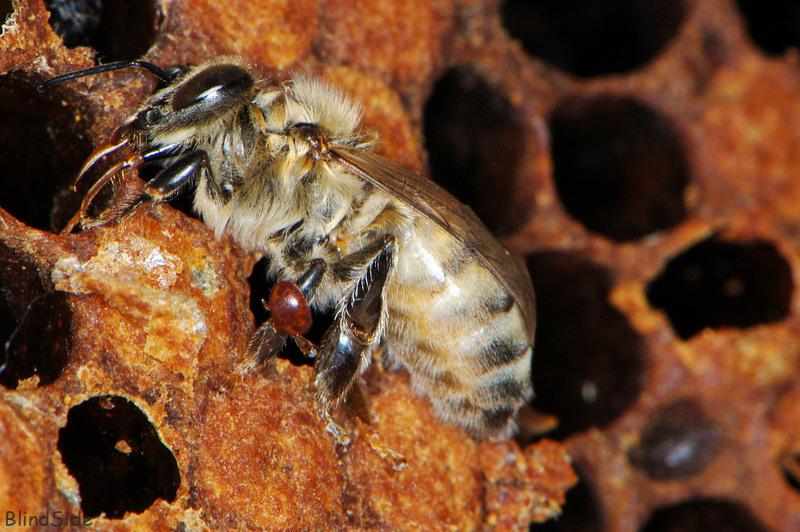
A refreshing change from all the mating fatalities is the honeybee. This insect will only lose its life when it attacks you. If the bee sees you as a threat to its family and hive, it will sting you. The problem for the bee is, once it stings, it dies.
There are prongs on the stinger that stop it from being able to pull it back out. Instead, it has to pull away and leave behind muscles, nerves, and even part of its digestive tract. The rupture in its abdomen is what leads to the bee’s demise.
However, because it also leaves behind nerves in its stinger, the stinger continues to dig deeper into your skin long after the bee has gone. That’s why it’s imperative to pull the stinger out (in any fashion) within a few seconds of being stung. Any longer, and toxins are pumped into the wound site.
Even though the honeybee loses its life after this traumatic process (for both us and the bees), it makes sense from an evolutionary standpoint. Worker honeybees can’t reproduce, so their role is to protect those in the hive which can. It makes sense for them to lose their lives protecting the very members of their species that can carry on the family tree.
2. Exploding Ant of Borneo
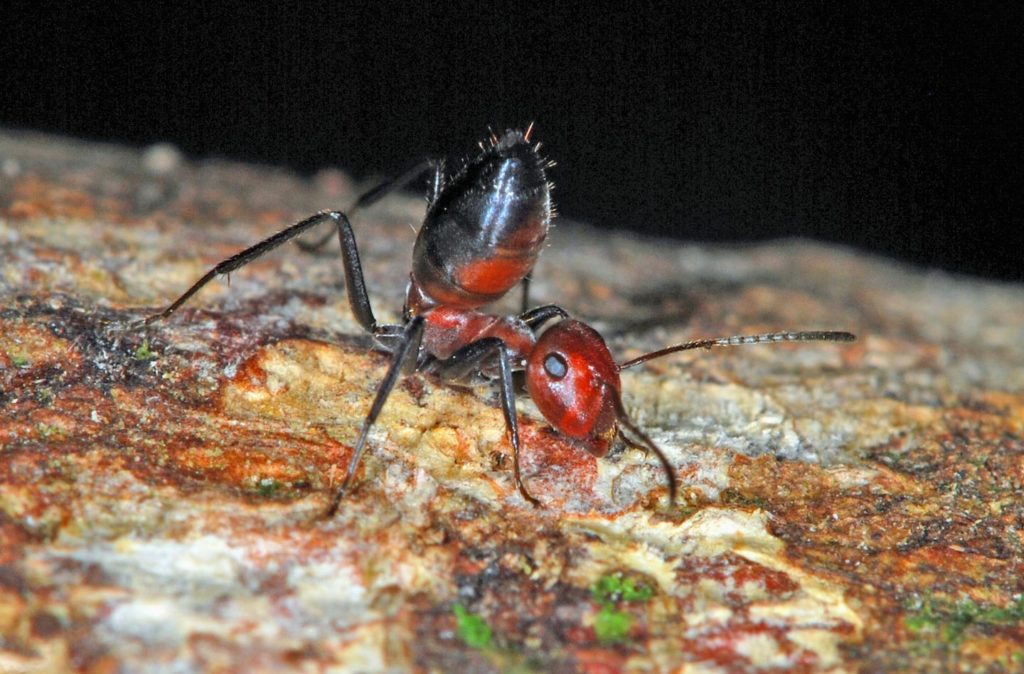
Ants are selfless creatures, even if you don’t see it by looking at them. It’s not until you’re researching them at a scientific level do you realize that they will go to the ends of the earth for their own kind.
Colobopsis explodens ants, also known as exploding ants, were discovered in the treetops of Borneo in 1935. They had a unique ability to explode in a self-sacrificial move and take down any threats to their colony.
They did this by latching onto an intruding insect, biting down, aiming their rears at the intruder, then flexing their stomachs until they exploded. What came out of them is a curry-like yellow substance that would cover and kill the threat.
These ants are so willing to protect their colony that even when researchers approached, they carried out this same process.
However, not all ants within that species were capable of exploding. Sterile females and the minor worker ants would sacrifice themselves for those that could reproduce in the colony and carry on the line. This is seen time and time again in colony insects.
1. Madagascar Chameleons
The Madagascar chameleon doesn’t live the most gratifying or satisfying of lives. It will spend two-thirds of its existence inside an egg, mate in the most horrific fashion, then weaken and die before its babies are born.
A researcher by the name of Kris Karsen from Oklahoma State University found it curious that he had only seen mature Madagascar chameleons. He and his team decided to mark 400 chameleons then track their movements. What they discovered was astonishing.
All the young hatch in early November, mature within seven weeks, mate, then pass on by April. They lose their strength and even fall out of trees for no apparent reason. Before this happens, the female will hatch around 12 eggs, which will incubate in the ground for up to eight months.
Researchers believe it’s the mating ritual that sees the lizards’ demise. The males will fight for extended periods to get the women of their dreams. This process is quite violent, which is likely why they pass on. What’s more, if they didn’t die at this point, they would have to hibernate.
Most other chameleons in Madagascar hibernate their way through the hospitable dry season until the wet weather arrives once more. Instead of sleeping, this species chooses to die instead. If that’s not self-destructive behavior, we don’t know what is!
Outro
Um, well, that was interesting. Did any stand out to you as particularly disturbing? Do you know of any other creatures that self-destruct? Also, check out our other cool stuff showing up on the screen now. See you next time.
